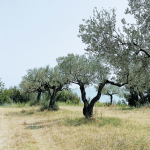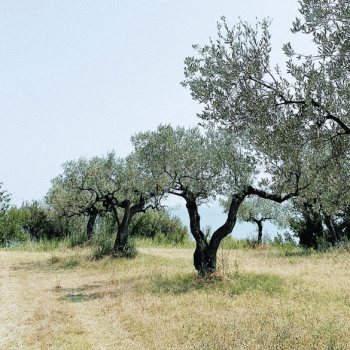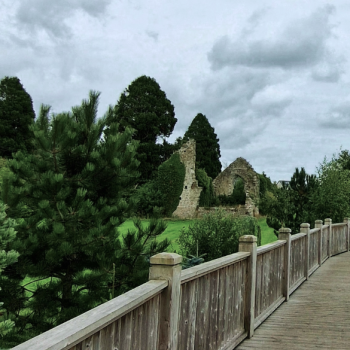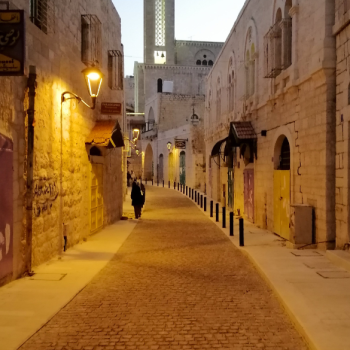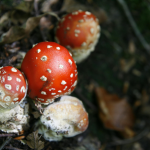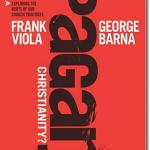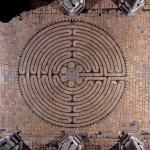Was John of Patmos on Magic Mushrooms?
Divine revelations, unbelievable sights, and personal testimonies were integral to the origination of Christianity. It is through believing the witnesses of Christ’s resurrection, visions of his return by his disciples, and revelatory near-death experiences (such as that of St. Paul), that the faith spread.
The Apocalypse of John—the Book of Revelation—is a particularly vivid and often horrifying account of an eschatological vision. The author reports the visions as an account of his experience in exile on the island of Patmos. The account might be described as “psychedelic”, with the iconography of a “bad trip”. It has become a fun theory to attribute the texts to a similar experience. But is it any more than an interesting theory?
Jesus Is a Mushroom
Jesus is not a mushroom.
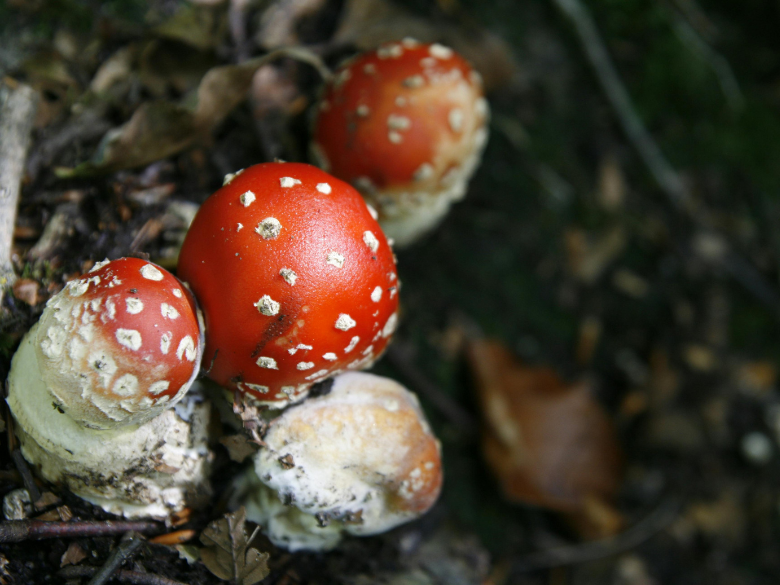
Published in 1970, the book The Sacred Mushroom and the Cross was published, authored by archaeologist and Dead Sea Scrolls scholar John Allegro. Allegro established himself with two popular books on the subject in the late 1950s.
The Sacred Mushroom utilizes etymological arguments that connect language development to the development of myths and religious practices. Allegros suggests entheogens (plants ingested in an attempt to provoke sacred visions) were not only used within early Christianity. He goes so far as to identify Jesus entirely with mushroom-derived psilocybin (magic mushrooms). He supposes that Jesus was not a historical figure but a construction by early Christians under the influence of these visions.
As a note, most scholars of the history of the period agree that Jesus was a real man. Historians can vary in the details. However, historical criticism standards as applied to the Christian Testament imply that he did exist. Jesus is mentioned in ancient histories outside of biblical texts, by non-Christians.
Mushroom-eating Christians: The Battle of Allegro vs. Wasson
Wasson, an ethnomycologist, studied the use of mushrooms in a religious context by the Mazatec Indigenous people in Mexico. The Salvia plant ska María Pastora is also used, a reference to the Virgin Mary. This practice is an example of a syncretic religion incorporating both traditional Indigenous practices and Roman Catholicism.
Wasson was able to gain access to the sacred ceremony of veleda by lying to Mazatec self-described sabia (”wise woman”) María Sabina about his worry for a sick child back home. This would create extremely harmful repercussions for Sabina upon publication of Wasson’s book.
Despite the abhorrent nature of this colonial anthropology, Wasson was, in a Western academic context, the expert in his field. Too often Western experts are similarly colonial in their process. It is in this position that Wasson became the preeminent critic of Allegro in general. One critique was over the interpretation of a late 13th-century French fresco, Temptation in the Garden of Eden. As two Wasson critics state in a 2019 article, this issue has colored all further conversations about the presence of mushrooms in Christian art.
Christian mushroom trees
This fresco was part of Allegro’s argument that the use of mushrooms was present in some Christian groups through a great deal of Christian history. Wasson, in contrast, argued that the use of the mushroom ended around 1000 BCE, tracing the use of the fly agaric mushroom, to the Near and Middle East in his 1968 book Soma: Divine Mushroom of Immortality.
The Allegro/Wasson debate begins with Allegro’s interpretation of the aforementioned fresco. The tree in the Garden here is, well, mushroom-y. At the top of the tree trunk/mushroom stalk is a hemisphere not unlike a mushroom cap, with similar branches, an interpretation shared by others.
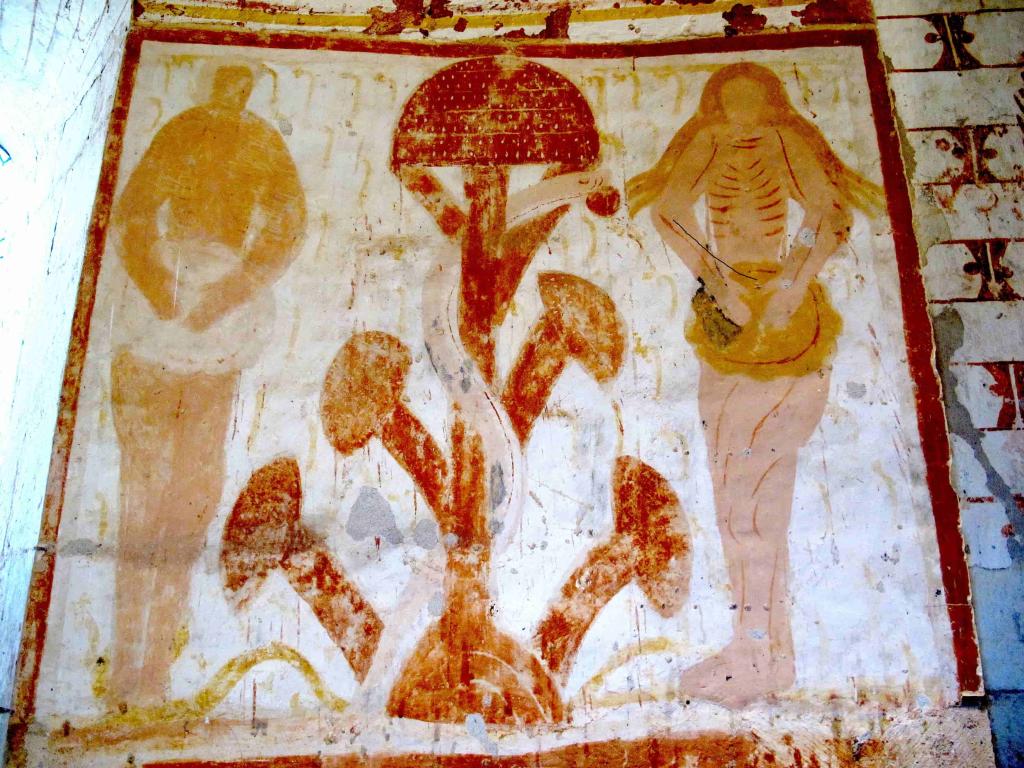
Wasson, in communication with a prominent French art historian, disagrees, based on the historian’s interpretation that the style was “prevalent in Romanesque and early Gothic art, which art historians actually refer to as a ‘mushroom tree’ in German”. In a thin defense of Allegro, the article points to the art historian’s suggestion in a follow-up letter, amidst continued reasoning against the mushroom interpretation, that maybe some “especially ignorant craftsman may have misunderstood the [stylized tree] as a real mushroom”, though the historian deems even that unlikely.
Ehnomycologist John B. Brown with wife and holistic psychotherapist Julie M. Brown, the authors, dismiss the context of the rest of the letter and continue to represent and refute strawman arguments as necessarily not a tree. They mention other churches in France with similar mushrooms (imagining, I suppose, that those are also not reproductions of the Gothic style). Wasson’s argument and omission of this second, supposedly damning, letter are attributed to his work as an account manager to the Vatican while working at J. P. Morgan. He retired from the company in 1963, five years before the publication of Soma.
The Reality of Historical Christian Mushroom Use
Forget the fresco. I’m not invested in definitive proof that it isn’t a mushroom. Is there any evidence of mushroom use in early Christianity? A more believable argument on the early use of mushrooms is presented by BU Professor of Classical Studies, Carl A. P. Ruck, who previously worked with Wasson. He argues that the eucharistic sacrament accounted for in the gospel accounts in Mark, Matthew, and Luke represents the inclusion of a ritual first attested to in 1 Corinthians. 1 Corinthians is dated to within decades of Jesus’s death, centuries before the gospels.
In 1 Corinthians 15:51-5 the use of the Greek “mustérion” can be translated to mystery. This term suggests a “secret knowledge” or revelation that comes through God. The Christians of Corinth would associate the word most closely with the Eleusinian Mysteries. The secretive initiations were connected to the myth of Persephone’s abduction. It is theorized by some, including Ruck, that psychedelic drugs invoked the experience of a death and resurrection cycle.
In this theory, the celebration of these rites would begin with the consumption of psychedelic drugs and a night of rapturous revelry. Paul offers his account of the Last Supper, including the connection of the bread and wine directly to the body of Christ in 1 Cor 11. Following this, 1 Cor 11:28-29 demands that the Corinthians properly honor Christ through proper self-orientation and honoring of God.
The concept of “breaking bread” could be found in the Hebrew Testament (as in Isaiah 58:7 where the Hebrew can be translated to “divide your bread”). This can be found across the Gospels in Jesus’s blessing of bread and feeding of the masses. Early Christians participated in communal living and meals which would make this a consistent part of their daily practice. 1 Cor 11:30 suggests that some of the Corinthians are falling ill or dying from the consumption of the sacrament. Ruck suggests that the Corinthians were ingesting entheogens like those of the Eleusinian practitioners, plants that are also toxic to the body.
The evidence is Paul’s advisement to limit their consumption and not take the revelatory sacrament for granted. Following this argument, if this practice existed in communities of early Christians, it is believable that at least some Christian groups continued to engage in some form of entheogen use, which would be sourced from various native plants.
A Mushroom-induced Apocalypse
If we return to John of Patmos, can we guess, even assume that he was taking mushrooms?
It could go either way. The imagery involved clearly lends itself to the belief of many for the theory to circulate so widely. Reliable sources indicating that Patmos was littered with agaric fly mushrooms and other hallucinogens are thin on the ground.
It seems odd to me to suggest that Revelations can only be described by someone tripping out of their mind. At this point in human history, the creativity of sober humanity should be clear. As others have noted, the imagery of John’s Apocalypse has been read by many scholars as an evocative metaphor for the fall of very real empires.
One can argue that John specifically would not take mushrooms; that this would violate his statements on pharmakeia. This term has often translated to sorcery or witchcraft. One example is the NLT translation of Revelation 18:23 “…For your merchants were the greatest in the world, and you deceived the nations with your sorceries.” The implication behind pharmakeia connects it to plants but implies an effort to control that which is only God’s.
Defining drugs, revelation and spiritual bypassing
The lines between “drugs”, medicine, and food were different in the world of the early Christians. In the modern day, caffeine is a drug, part of my Excedrin, in my daily coffee, and in caffeine pills I don’t touch. For people with ADHD, certain stimulants help us regulate and may even improve sleep in the process. For those without it, stimulants are recreational or study aids, producing high output, insomnia, and addiction.
Does taking mushrooms with spiritual intent count as sorcery? Does it overstep the power of God, calling revelation and connection that God should decide to give?
I don’t think it’s possible to presume the direction this interpretation would go in for the writer of Revelations. Accepting the proposed interpretation of 1 Corinthians suggests there are acceptable and unacceptable uses. Medical and psychological dangers do exist in the consumption of mushrooms in the context of modern controlled dosing.
If we assume the revelation is a true encounter with God, it’s obvious to me that it wouldn’t be disallowed. It seems to me that God would not appear at the command of a plant if He didn’t want us to. Fasting, dehydration, and intense prayer by revered Christian mystics mimic the effects of taking entheogens. Is this an attempt to connect to God, or an attempt to control Him?
We can only guess what the early Christians thought or where John of Patmos drew the line. We can only guess if he was in the ecstatic throes of fasting, deep meditation, or entheogenic mushrooms, or if he the vivid imagery came to him straight from God, in nightmares, or as an effective theological depiction of the fall of empires to God.
I think it’s more important to understand why we feel a need to know, why we want a firm answer, and why we take for granted that there is one. What is driving the need to define entheogenic-induced encounters with the divine as good or bad, true or false? Why can’t we live in the mystery?


